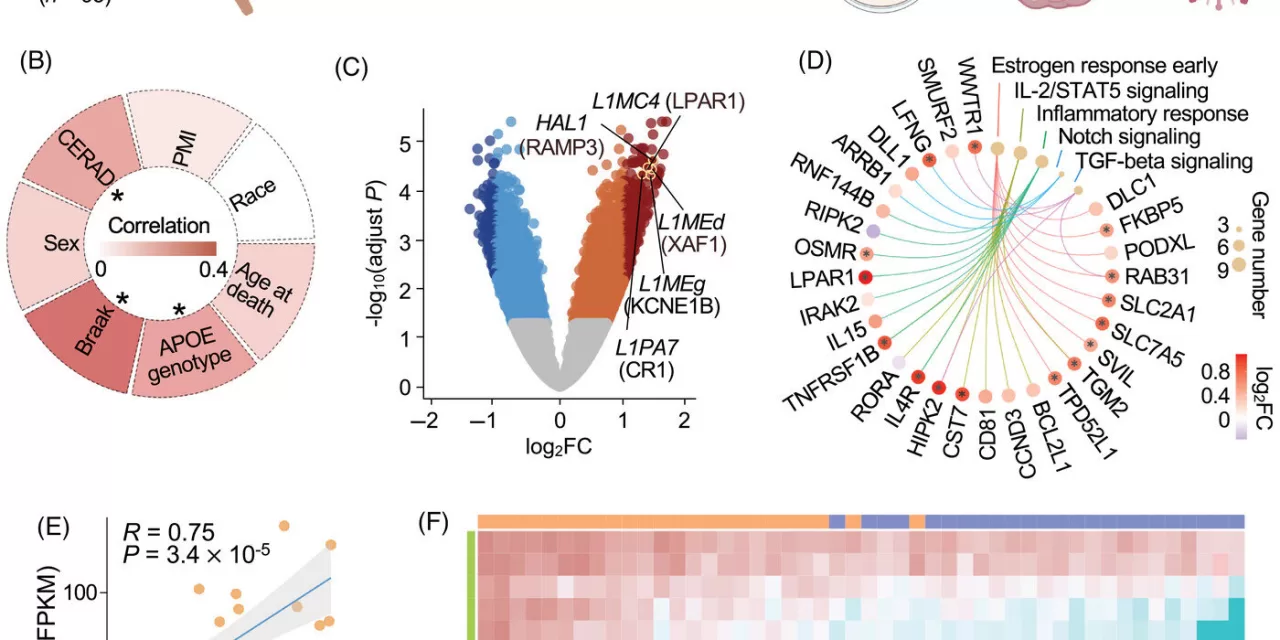Cleveland, OH – Researchers from Cleveland Clinic’s Genome Center have identified a potential pathway through which human herpes simplex virus-1 (HSV-1) may contribute to the development of Alzheimer’s disease in aging brains. Published in Alzheimer’s & Dementia, the study presents new insights into how herpesviruses might accelerate neurodegenerative processes, while also highlighting two FDA-approved drugs that could help reverse this pathway in laboratory settings.
The findings provide the first concrete evidence supporting the previously debated link between human herpesviruses (HHVs) and Alzheimer’s disease. According to Feixiong Cheng, Ph.D., senior author and director of the Genome Center, understanding this connection is a critical step in the fight against neurodegenerative diseases.
The Herpesvirus Connection
For most people, herpes infections are either an inconvenience or remain asymptomatic. Many herpesviruses are widespread, with virtually every adult having been exposed to at least three different types. Some strains cause conditions such as cold sores or chickenpox, but even after symptoms disappear, the virus remains dormant in the body for life.
While the immune system usually keeps herpesviruses in check, its ability to do so can decline with age, illness, or pregnancy. Previous studies have linked herpes reactivation to pregnancy complications, developmental disorders, and even cancer. Now, researchers are exploring its role in Alzheimer’s disease.
Dr. Cheng’s team hypothesized that latent HSV-1 infections could activate transposable elements (TEs)—mobile DNA sequences that can move within the genome and disrupt genetic functions. Nearly half of human DNA consists of transposable elements, and they become increasingly active with age. The study mapped TEs associated with Alzheimer’s and analyzed RNA sequencing data from both healthy and Alzheimer’s-affected brains.
Key Findings
The study identified a striking link between HSV-1 infections and the activation of transposable elements in Alzheimer’s-affected brains. When HSV-1 was present, certain TEs were highly activated, leading to neuroinflammation and the accumulation of tau and other proteins commonly associated with Alzheimer’s disease. The research outlined the following step-by-step process:
- HSV-1 Infection Reactivation: A person contracts HSV-1, or a latent infection becomes active with age.
- Activation of Transposable Elements: HSV-1 triggers transposable elements like LINE-1.
- Disruption of Genetic Processes: The activated transposable elements interfere with genes that regulate brain health.
- Alzheimer’s Disease Onset: This disruption leads to neuroinflammation, accumulation of toxic proteins, and ultimately, neurodegeneration.
Potential Treatments
To further support their findings, the researchers used artificial intelligence to analyze 80 million public health records, identifying a significant trend: individuals prescribed the antiviral drugs valacyclovir and acyclovir were less likely to be diagnosed with Alzheimer’s later in life. Laboratory models confirmed that these medications could reverse the HSV-1-induced changes linked to Alzheimer’s.
“These results suggest potential relationships between HSV-1 infection and Alzheimer’s disease and provide two promising drug candidates for further study,” said Dr. Cheng. “We hope our findings can pave the way for new treatments, not just for Alzheimer’s but for other neurological diseases linked to herpesviruses.”
Looking Ahead
While this research provides strong evidence of a connection between HSV-1 and Alzheimer’s disease, further clinical studies are needed to confirm whether antiviral treatments could serve as viable therapeutic options for preventing or slowing Alzheimer’s progression.
Disclaimer: This article is for informational purposes only and does not constitute medical advice. Readers should consult healthcare professionals for guidance on Alzheimer’s disease, herpes infections, or any related medical concerns.
More Information: Yayan Feng et al, Human herpesvirus‐associated transposable element activation in human aging brains with Alzheimer’s disease, Alzheimer’s & Dementia (2025). DOI: 10.1002/alz.14595












